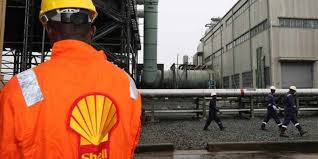Oil & Energy
Renewable Energy Boom With Waste Problem

As the global renewable energy capacity increases, so does the amount of waste from end-of-life equipment from solar, wind and other renewable energy activities. If we don’t address this problem soon, it could become a whole new threat to the environment and human health.
While a transition away from fossil fuels to alternative green energy sources is helping the world to reduce its greenhouse gas emissions and combat climate change, it is important to consider the implications that new energy activities may have on the environment.
Solar panels and wind turbines have a limited lifespan and need to be disposed of appropriately once they reach this point. While some components can be recycled and reused, much of the old equipment ends up in landfills due to the lack of infrastructure in place to manage the materials suitably.
Renewable energy equipment, such as solar panels, contains components that can be harmful to humans, such as lead and cadmium, as well as other materials, like glass, aluminum, and silicon, which can be harmful to the environment if disposed of improperly.
One way that out-of-use equipment can be managed is through the creation of standards, such as the Waste Electrical and Electronic Equipment (WEEE) directive from the European Union, which provides guidelines for the gathering, handling, recycling, and recovery of solar panels.
The U.S. Resource Conservation and Recovery Act (RCRA) also addresses the correct disposal of solar panels.
However, many countries have yet to introduce clear standards for renewable energy equipment disposal, which has led to dangerous methods of disposal.
Several countries around the globe are rapidly increasing their solar and wind energy capacity, which relies on the production and installation of millions of solar panels and turbines. Tens of millions of solar panels are being installed each year in the U.S. alone, and globally the figure is over a hundred million.
Despite the accelerated pace of the rollout, there are few recycling facilities prepared to manage old equipment.
Some countries are managing equipment disposal better than others. For example, France claims that 90 percent recycling efficiency is achieved in some of its flagship disposal facilities.
However, others do not have mechanisms in place to even consider recycling old equipment. While it is important to put proper waste disposal mechanisms in place for the safety of people and the environment, it can also be a lucrative business.
According to a study by the International Renewable Energy Agency (IRENA) and the U.S. Department of Energy’s National Renewable Energy Laboratory (NREL), the cumulative value of materials that can be recycled from solar photovoltaic (PV) waste is estimated at $4 billion by 2040 and $8.8. billion by 2050.
Supplies of many of the materials used to produce green energy equipment are finite, meaning it is important to recycle materials to reproduce equipment to continue to produce renewable energy. Jinlei Feng, a programme officer at IRENA, explained, “By 2050, there will be more than 210 million tonnes of cumulative solar PV waste globally and more than three-quarters of that waste will be generated after 2040 and 40% in the last five years between 2045-2050”.
Feng added, “Annual solar PV waste generation will touch 10 million tonnes by 2040 and increase to 20 million tonnes by 2050”.
India is currently trying to navigate solar waste problem. Pavagada in the south of India is home to the world’s third-largest solar power plant, which holds 25 million panels across a 50 km2 park, with a capacity of 2,050MW. There are 11 other giant solar parks across the country, with plans to develop a further 39 across 12 states by 2026.
However, with great solar ambitions comes significant waste. India is aiming for a solar output capacity of 280GW by 2030, of which 70.1GW is already installed.
One study predicts that this will produce an accumulation of over 600,000 tonnes of solar waste by the end of the decade, which could increase 32-fold to over 19 million tonnes by 2050.
Although there are protocols in place to manage the disposal of old equipment, which state that solar waste from the plants must be transferred to e-waste contractors, authorized by the Central Pollution Control Board (CPCB), within a specified timeframe – typically 90 or 180 days – few abide by these rules.
Most solar farms are in remote areas and must pay to transport old equipment to authorised contractors. Solar glass has no real value, meaning there is little incentive for waste contractors to collect and manage the equipment.
This has led to the development of a network of informal operators – who dismantle, aggregate, transport and recycle panels.
Instead of ensuring proper disposal methods are followed, many operators sell their waste equipment to informal buyers, meaning the materials cannot be recycled and repurposed, and many of the materials end up harming both people and the environment.
To ensure that renewable energy equipment is disposed of appropriately, and recycled where possible, governments must establish clear standards and regulations for energy waste disposal.
Further, they must ensure the mechanisms are in place and funding is available to guarantee proper disposal takes place. Without the necessary standards, green energy equipment could contribute to environmental and health problems in the coming decades.
Bradstock writes for Oilprice.com.
By: Felicity Bradstock
Oil & Energy
Nigeria Loses More Crude Oil Than Some OPEC Members – Nwoko

Nigeria’s losses due to crude oil theft has been said to be more significant than those of some other members of the Organisation of Petroleum Exporting Countries(OPEC).
The Chairman, Senate Ad- hoc Committee on Crude Oil Theft, Senator Ned Nwoko, made this known in an interview with newsmen in Abuja.
Nwoko noted with dismay the detrimental impact of the issue, which, he said include economic damage, environmental destruction, and its impact on host communities.
According to him, the theft was not only weakening the Naira, but also depriving the nation of vital revenue needed for infrastructure, healthcare, education and social development.
The Senator representing Delta North Senatorial District described the scale of the theft as staggering, with reports indicating losses of over 200,000 barrels per day.
Nwoko disclosed that the ad hoc committee on Crude Oil Theft, which he chairs, recently had a two-day public hearing on the rampant theft of crude oil through illegal bunkering, pipeline vandalism, and the systemic gaps in the regulation and surveillance of the nation’s petroleum resources.
According to him, the public hearing was a pivotal step in addressing one of the most pressing challenges facing the nation.
‘’Nigeria loses billions of dollars annually to crude oil theft. This is severely undermining our economy, weakening the Naira and depriving the nation of vital revenue needed for infrastructure, healthcare, education, and social development.
‘’The scale of this theft is staggering, with reports indicating losses of over 200,000 barrels per day more than some OPEC member nations produce.
‘’This criminal enterprise fuels corruption, funds illegal activities and devastates our environment through spills and pollution.
‘’The public hearing was not just another talk shop; it was a decisive platform to uncover the root causes of crude oil theft, bunkering and pipeline vandalism.
‘’It was a platform to evaluate the effectiveness of existing surveillance, monitoring, and enforcement mechanisms; Identify regulatory and legislative gaps that enable these crimes to thrive.
‘’It was also to engage stakeholders, security agencies, host communities, oil companies, regulators, and experts to proffer actionable solutions; and strengthen legal frameworks to ensure stricter penalties and more efficient prosecution of offenders”, he said.
Nwoko noted that Nigeria’s survival depended
Oil & Energy
Tap Into Offshore Oil, Gas Opportunities, SNEPCO Urges Companies

Shell Nigeria Exploration and Production Company Ltd. (SNEPCo) has called on Nigerian companies to position themselves strategically to take full advantage of the growing opportunities in upcoming offshore and shallow water oil and gas projects.
The Managing Director, SNEPCO, Ronald Adams, made the call at the 5th Nigerian Oil and Gas Opportunity Fair (NOGOF) Conference, held in Yenagoa, Bayelsa State, last Thursday.
Adams highlighted the major projects, including Bonga Southwest Aparo, Bonga North, and the Bonga Main Life Extension, as key areas where Nigerian businesses can grow their capacity and increase their involvement.
“Shell Nigeria Exploration and Production Company Ltd. (SNEPCo) says Nigerian companies have a lot to benefit if they are prepared to take advantage of more opportunities in its offshore and shallow water oil and gas projects.
“Projects such as Bonga Southwest Aparo, Bonga North and Bonga Main Life Extension could grow Nigerian businesses and improve their expertise if they applied themselves seriously to executing higher value contracts”, Adams stated.
Adams noted that SNEPCo pioneered Nigeria’s deepwater oil exploration with the Bonga development and has since played a key role in growing local industry capacity.
He emphasized that Nigerian businesses could expand in key areas like logistics, drilling, and the construction of vital equipment such as subsea systems, mooring units, and gas processing facilities.
The SNEPCO boss explained that since production began at the Bonga field in 2005, SNEPCo has worked closely with Nigerian contractors to build systems and develop a skilled workforce capable of delivering projects safely, on time, and within budget both in Nigeria and across West Africa.
According to him, this long-term support has enabled local firms to take on key roles in managing the Bonga Floating, Production, Storage and Offloading (FPSO) vessel, which reached a major milestone by producing its one-billion barrel of oil on February 3, 2023.
Oil & Energy
Administrator Assures Community Of Improved Power Supply

The Emohua Local Government Area Administrator, Franklin Ajinwo, has pledged to improve electricity distribution in Oduoha Ogbakiri and its environs.
Ajinwo made the pledge recently while playing host in a courtesy visit to the Oduoha Ogbakiri Wezina Council of Chiefs, in his office in Rumuakunde.
He stated that arrangements are underway to enhance available power, reduce frequent outages, and promote steady electricity supply.
The move, he said, was aimed at boosting small and medium-scale businesses in the area.
“The essence of power is not just to have light at night. It’s for those who can use it to enhance their businesses”, he said.
The Administrator, who commended the peaceful nature of Ogbakiri people, urged the Chiefs to continue in promoting peace and stability, saying “meaningful development can only thrive in a peaceful environment”.
He also charged the Chiefs to protect existing infrastructure while promising to address the challenges faced by the community.
Earlier, the Oduoha Ogbakiri Wezina Council of Chiefs, led by HRH Eze Goodluck Mekwa Eleni Ekenta XV, expressed gratitude to the Administrator over his appointment and pledged their support to his administration.
The chiefs highlighted challenges facing the community to include incessant power outage, need for new transformers, and the completion of Community Secondary School, Oduoha.
The visit underscored the community’s expectations from the LGA administration.
With Ajinwo’s assurance of enhancing electricity distribution and promoting development, the people of Oduoha Ogbakiri said they look forward to a brighter future.
By: King Onunwor

